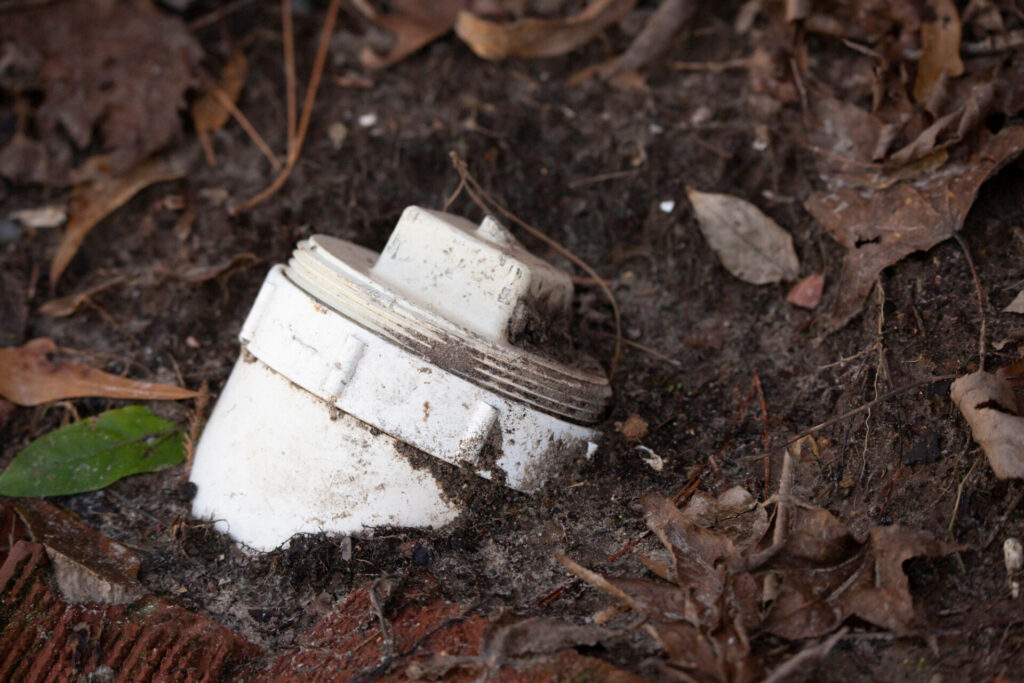
Maintaining a properly functioning plumbing and drainage system is crucial for every property owner. One vital component of this system is the sewer cleanout. However, many people are unfamiliar with what a sewer cleanout is and why it matters for plumbing and drain maintenance.
In this blog post, we will discuss everything you need to know about sewer cleanouts, including their purpose, location, and importance in ensuring the efficiency and longevity of your plumbing system. So, if you want to prevent costly plumbing issues and maintain a smoothly running drainage system, keep reading to discover why sewer cleanouts matter.
Understanding Sewer Cleanouts
A sewer cleanout is a pipe or fitting with a cap or plug that serves as a point of access to the main sewer line for cleaning and maintenance. This pipe allows professional plumbers to remove clogs or perform maintenance tasks without digging the entire pipe.
It also facilitates the insertion of sewer line cameras or other specialized equipment to identify any problems within the system. By having a cleanout, plumbers or homeowners can effectively remove clogs and blockages in the sewer line, ensuring proper drainage and preventing potential backups or flooding.
Importance of Sewer Line Cleanout
A sewer cleanout is important in facilitating efficient maintenance and repair. Typically distinguished by its brass or copper drainage lines or a brass or cast iron drain cover, it is a point of entry to access and service your sewer lines. Without it, diagnosing and rectifying plumbing problems would be far more complex and costly.
For homeowners, understanding how to locate and utilize the sewer cleanout is essential for preserving the integrity of the leading plumbing line, particularly the main sewage line that extends from your property to either the municipal sewer system or a septic tank. This access point allows for routine inspections, cleaning, and clearing of any blockages, ensuring the smooth flow of wastewater away from your home.
Overall, a sewer cleanout is a fundamental component of your plumbing system that simplifies maintenance, troubleshooting, and repairs. Its proper utilization can save you time, money, and stress in dealing with plumbing issues, making it an indispensable feature for any property owner.
Where is the Sewer Cleanout Located?

Locating the sewer cleanout is crucial for efficiently maintaining and addressing any issues within your drain system. In many cases, the sewer cleanout can be found outdoors, typically near where your main sewage line extends from your home to connect with the municipal sewer system. It may look like capped pipes sticking out of the ground, and sometimes, it can be hidden beneath a cover or cap.
The cleanout is usually a T- or Y-shaped pipe fitting with a removable cap or plug. For homes with older plumbing systems, especially those with cast iron drain cleanouts, the cleanout may be covered with debris or dirt, making it harder to locate. If you’re unsure about finding the sewer cleanout, start by visually inspecting the exterior of your home for any capped pipes sticking out of the ground.
Sometimes, the cleanout may be concealed under landscaping or buried beneath a few inches of soil. You can estimate where the drainage line is coming from your home towards the municipal sewer system to help locate the cleanout’s vicinity.
What to Do If You Can’t Locate the Cleanout
If you cannot find the sewer cleanout on your own, it’s essential not to damage your property or plumbing system while searching for it. Trying to excavate or uncover the cleanout without the proper tools or knowledge can lead to excess damage and costly repairs. Instead, consider the following steps:
- Consult Plumbing Professionals: Reach out to plumbing professionals who are experienced in locating sewer cleanouts. They have specialized equipment and techniques, such as sewer line cameras, to pinpoint the cleanout’s location without causing unnecessary damage.
- Review Property Records: Check your property records, including blueprints or plumbing diagrams if available. These documents may provide clues about the cleanout’s location.
- Use a Metal Detector: A metal detector can help identify its presence beneath the soil if the cleanout cover is metal.
- Ask Previous Owners: If you recently purchased the property, consider contacting the previous owners to inquire about the location of the cleanout. They might have valuable information to share.
How to Clean the Sewer Line Using the Cleanout?

Tools and Equipment Needed for Sewer Line Cleaning
- Plumbing Snake or Auger
- High-Pressure Water Jet
- Pipe Inspection Camera
- Safety Gear
- Bucket and Towels
- Drain Cleaning Machine
- Plumbing Wrenches
- Plumbing Tape and Sealant
- Flashlight or Work Light
- Safety Cones or Barriers
- Chemical Drain Cleaners (Optional)
- Protective Coverings for Surrounding Areas
- Respirator (if needed)
- Spare Cleanout Plugs and Gaskets
- Garden Hose (if using a water jet)
Step-by-Step Guide to Clean the Sewer Line Using the Cleanout
Once you’ve successfully located the sewer cleanout, you can use it to clean the sewer line or address blockages. Here’s how to clean the sewer line using the cleanout:
- Remove the Cleanout Plug: Use a wrench or pliers to remove the cleanout plug from the drain carefully. Make sure to have a bucket or container ready to catch any wastewater that may flow out.
- Inspect the Cleanout: Check the cleanout for any debris or blockages. If you can see the clog in the drain line, you may attempt to remove it using a plumbing snake or auger.
- Use a Plumbing Snake: Insert a plumbing snake into the cleanout and feed it into the sewer line. Turn the snake’s handle clockwise to break up or retrieve the blockage. If you encounter resistance, work the snake back and forth to dislodge the obstruction.
- Flush with Water: After clearing the blockage, flush the sewer line with a significant amount of water to ensure that any remaining debris is carried away.
- Replace the Cleanout Plug: Securely replace the cleanout plug once the line is clear and water flows smoothly. Ensure it’s tightened properly to prevent leaks.
- Monitor for Future Issues: Monitor your sewer system for recurring blockages or drainage problems. If issues persist, it may signify a more significant problem that requires professional attention.
Note that while you can attempt to clean the sewer line using the cleanout on your own, more complex issues or blockages in the sewer system may require the expertise of plumbing professionals who can perform residential and commercial sewer video camera inspections and provide sewer line repair services.
Signs That Your Sewer or Drain Cleanout Needs Attention
Recognizing the warning signs of a clogged sewer line is crucial for homeowners to prevent potentially costly and inconvenient plumbing issues. One standard indicator is experiencing slow or gurgling drains throughout your home, whether it’s in sinks, bathtubs, showers, or floor drains.
Unpleasant and persistent odors emanating from your drains, particularly in areas like the kitchen or bathroom, can also be a telltale sign of a sewer line problem, often caused by trapped wastewater due to the blockage. Frequent toilet backups, especially after attempting to clear them, may point to a sewer line clog, as toilets are directly connected to the main sewer line.
Water pooling in your yard, especially along the sewer line path, or moisture and water in your basement, could indicate a severe issue. When multiple plumbing fixtures and drains in your home are affected simultaneously, such as slow drainage in the kitchen sink and bathtub, it’s likely a sewer line problem.
Additionally, bubbling or rising water in toilets or drains when using other fixtures is another worrisome sign. If any of these signs manifest, it’s essential to promptly contact a professional plumber for accurate diagnosis and the necessary solutions. In some cases, cleaning the sewer line through a cleanout may resolve the issue, but more severe clogs or damage may require repair or replacement of the sewer line.
Importance of Timely Sewer Cleanout Maintenance
- Timely sewer cleanout maintenance prevents costly and disruptive sewer backups.
- Regular cleanouts reduce the risk of environmental contamination from sewage spills.
- Proper maintenance preserves the structural integrity of your sewer pipe system.
- It safeguards your health by minimizing exposure to harmful pathogens.
- Timely cleanouts ensure that your plumbing system operates well, saving on water and energy costs.
- Preventing blockages through maintenance avoids emergency repair expenses.
- Routine sewer cleanouts minimize the need for harsh chemicals, promoting eco-friendliness.
Professional Sewer Cleanout Services
While homeowners can clean the sewer line using the cleanout themselves, certain situations may require professional assistance. If the clog is severe, recurring, or there are multiple clogs in the sewer line, it is best to hire a professional plumber with experience in sewer cleanout services. Sewer cleanout professionals have the expertise and equipment to thoroughly clean the sewer line, identify underlying issues, and provide effective solutions.
Additionally, professional plumbers can offer maintenance tips to prevent future clogs and ensure optimal functionality of the plumbing system. Remember to consider their experience, reputation, and customer reviews. Also, ensure the company is licensed and insured, guaranteeing it meets industry standards and regulations. Requesting quotes from multiple providers will also help get the best service price.
How Much Does It Cost to Have a Sewer Cleanout Performed by a Professional Plumber?
The cost of having a sewer cleanout performed by a professional plumber can vary depending on factors such as your location, the severity of the blockage, the time of service, accessibility, required equipment, and the plumber’s experience and reputation. But on average, you might expect to pay anywhere from $100 to $800 or more for a sewer cleanout service.
For routine maintenance or minor blockages, the cost may be on the lower end of this range, while more complex issues that require extensive repairs or specialized equipment can push the cost higher. Obtaining quotes from local plumbers and discussing your specific situation is essential to get a more accurate estimate for your sewer cleanout. Additionally, consider obtaining multiple quotes to ensure you get the best deal for the services you need.
Frequently Asked Questions
Q: Can I open the sewer cleanout myself?
A: In some cases, you can open the cleanout cap yourself to inspect for blockages or perform essential maintenance. However, contacting a professional plumber is advisable if you’re unsure or uncomfortable doing this. They have the necessary tools and expertise to handle the job safely.
Q: How often should I have my sewer cleanout inspected or cleaned?
A: Regular maintenance schedules can vary depending on your specific circumstances, but it’s generally recommended to have a professional inspect and clean your sewer line every 18-22 months. If you experience frequent drain issues or notice slow drains, it may be necessary to schedule more frequent cleanouts.
Q: What can I do to prevent sewer line problems in the first place?
A: To prevent sewer line problems, take a few precautionary measures. Avoid flushing non-biodegradable items like wipes or feminine hygiene products down the toilet. Be mindful of what goes down the drains in your kitchen or bathroom and use drain traps to catch any debris. Additionally, regular enzyme-based drain cleaners can help keep your sewer lines clear.
Q: Are there any DIY methods for cleaning a sewer line through the cleanout?
A: While professional help is recommended for cleaning sewer lines, you can try a few DIY methods. One such method is using a sewer snake or drain auger to remove clogs or blockages. However, it is essential to exercise caution and avoid using excessive force to prevent causing damage to the pipes.
Q: How can I prevent my sewer cleanout from becoming blocked or buried over time?
A: It is crucial to keep the area around the sewer cleanout clear and accessible. Avoid planting trees or shrubs near the cleanout to prevent root intrusion. Additionally, ensure the cleanout is not buried under debris or landscaping materials. Regularly inspect the cleanout and remove any obstructions to ensure easy access.
Q: Can I use chemicals to clean my sewer line through the cleanout?
A: Using chemicals to clean your sewer line through the cleanout is not recommended. Harsh chemicals can cause damage to the pipes and may be ineffective in removing stubborn blockages. It is best to rely on professional plumbing services that use appropriate methods and equipment for safe and effective cleaning.
Q: Can a damaged sewer cleanout be repaired or replaced?
A: Yes, a damaged sewer cleanout can be repaired or replaced. If the cleanout is damaged or broken, it is crucial to have it repaired as soon as possible to prevent further issues. Plumbing professionals can assess the condition of the cleanout and recommend the appropriate repair or replacement solution.
Conclusion
In conclusion, the sewer or drain cleanout is crucial in plumbing and drainage maintenance, especially for older homes with cast iron pipes. Typically located outside, this access point is the gateway to the main sewer or sewer line cleanouts, making it indispensable for identifying and addressing various plumbing issues.
By understanding what a sewer cleanout is and why it matters, homeowners can take proactive steps to ensure the proper functioning of their plumbing system and prevent inconvenient sewer problems. So whether it’s a blockage in the drain pipe or a problem within the main sewer line inside or outside the house, the cleanout pipe is vital for maintaining a smoothly functioning plumbing system.
For more helpful like this, subscribe to our community at the Family Hint today!




